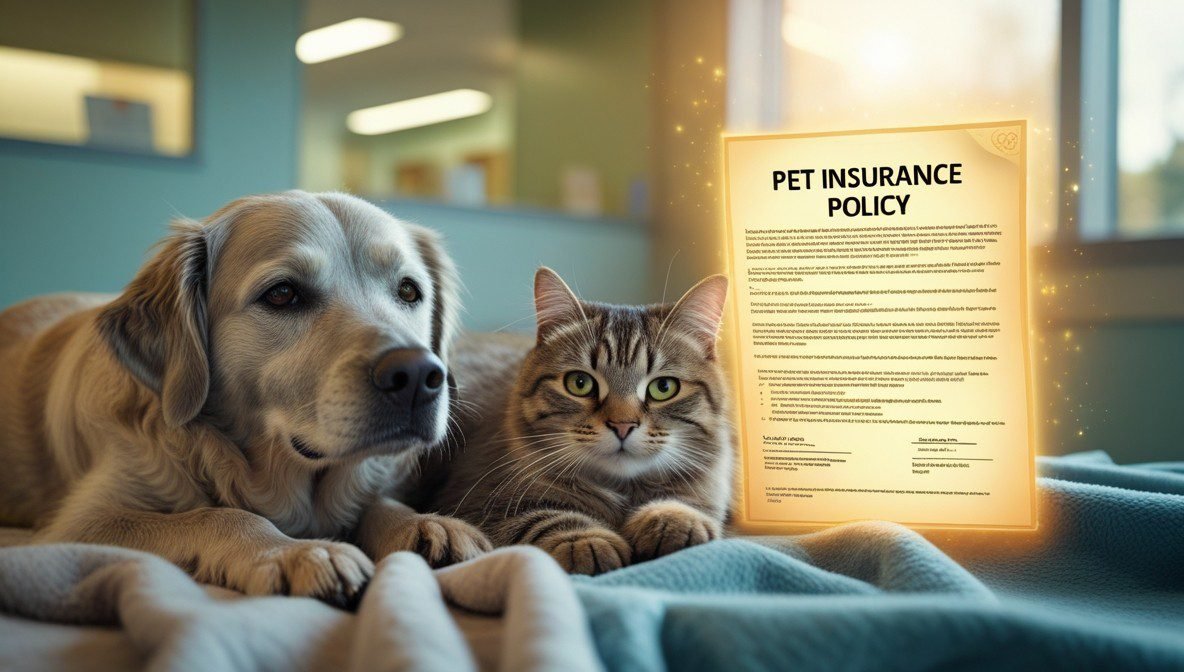I’ve always had a soft spot for older pets. There’s something about their graying muzzles and slower steps that tugs at my heart. My current dog, Luna, is only three, but my old golden retriever, Max, taught me what it means to love a senior pet. As Max aged, his vet visits got more frequent—and way pricier. When he hit 10, I started wondering if pet insurance could’ve saved me from those gut-punching bills. Now, with Luna bounding around, I’m thinking ahead. Is pet insurance for senior pets worth it? I’ve dug into real stories, crunched some numbers, and reflected on my own journey to figure it out. Spoiler: it’s not a simple yes or no, but these tales might help you decide for your own furry friend.
Max and the Creaky Joints
Let’s start with my own story, because Max’s golden years shaped how I see pet insurance today. Max was a goofball—chasing tennis balls well into his 80s (in dog years, that is). But around age 11, he started limping after our walks. I chalked it up to a rough play session, but the limp stuck around. The vet diagnosed arthritis, common in older dogs, and prescribed meds, physical therapy, and a possible hip surgery down the line. The first bill was $1,200 for tests and meds alone. Surgery? That was quoted at $5,000.
I didn’t have pet insurance for Max. I’d always thought, “He’s healthy—why bother?” Big mistake. Those bills piled up fast, and I was dipping into savings just to keep him comfortable. Max lived to 14, but the financial strain lingered. I remember late nights googling “pet insurance for older dogs,” wondering if it was too late. If I’d insured him earlier, I could’ve covered most of those costs—meds, therapy, maybe even surgery—for a fraction of what I paid. That regret still stings, and it’s why I’m sharing this now.
Sophie’s Second Chance
Then there’s Ellen, a retired teacher from Portland I met through a pet forum. Her cat, Sophie, was 12 when things took a turn. Sophie was a sassy tabby who ruled Ellen’s house, perching on bookshelves like a queen. But one day, Ellen noticed Sophie drinking water like it was her job and missing the litter box. “I thought she was just being dramatic,” Ellen told me, laughing softly. A vet visit revealed kidney disease, a common issue in senior cats.
The treatment plan included special food, meds, and IV fluids, costing $3,000 upfront and $200 a month after that. Ellen was on a fixed income, and her savings were earmarked for home repairs. “I was terrified I’d lose her,” she said. Luckily, Ellen had insured Sophie at age 8, before any major health issues popped up. Her plan covered 80% of the initial costs and half the ongoing meds. Ellen paid about $700 out of pocket for the first year—a far cry from thousands. Sophie’s still lounging on those bookshelves, and Ellen credits insurance for giving her more time with her queen.
Rusty’s Unexpected Twist
Another story comes from Mark, a mechanic in Charlotte, North Carolina, who adopted Rusty, a 10-year-old basset hound, from a shelter. Mark wasn’t sure about insuring an older dog, but Rusty’s soulful eyes won him over. “He looked like he’d seen it all,” Mark said. Six months in, Rusty started coughing—a deep, hacking sound that made Mark’s stomach drop. The vet found a tumor in Rusty’s lung, likely cancerous, requiring surgery and chemo. The estimate? $9,000.
Mark had enrolled Rusty in pet insurance right after adoption, despite the higher premiums for senior pets. The policy covered 85% of surgery and chemo, plus follow-up tests. Mark paid $1,800 upfront, with reimbursements covering most of the rest. “I couldn’t have afforded it otherwise,” he admitted. Rusty’s still waddling around, slower but happy, and Mark’s glad he took the plunge. “It wasn’t cheap, but it was worth every penny,” he said.
The Real Deal on Senior Pet Insurance
These stories—mine, Ellen’s, Mark’s—show why pet insurance for senior pets is such a hot topic. Older animals are prone to health issues like arthritis, kidney disease, or cancer, and vet bills reflect that. A 2023 report from the North American Pet Health Insurance Association says treatments for senior pets can range from $2,000 for chronic conditions to $15,000 for surgeries. Without insurance, those costs can force heartbreaking choices.

But here’s the catch: insuring a senior pet isn’t as simple as signing up for a puppy. Premiums are higher—think $50–$150 a month for dogs, $30–$80 for cats, depending on age and breed. Pre-existing conditions, like Max’s arthritis by the time I looked into it, are usually excluded. And some plans cap payouts or limit coverage for age-related issues. Still, the right policy can be a lifesaver. The American Veterinary Medical Association notes that 1 in 3 pets over 10 faces a major health issue yearly. That’s a risk I wish I’d planned for.
Weighing the Pros and Cons
Let’s break it down, because I’ve been there, staring at insurance quotes and wondering if it’s a scam or a godsend. On the pro side, insurance can cover big-ticket items—surgeries, cancer treatments, even dental work—that hit senior pets hard. Ellen’s story shows how it can manage chronic conditions too, keeping costs predictable. Plans often include diagnostics like X-rays or bloodwork, which add up fast. For me, knowing Luna’s future vet bills could be covered brings peace of mind I didn’t have with Max.
On the flip side, it’s not perfect. Premiums for a 12-year-old dog like Rusty were steep, and Mark had to budget carefully. If your pet’s already sick, you’re out of luck for those conditions. Some plans skimp on wellness care, like Sophie’s special diet, which Ellen paid for herself. And yeah, you might pay premiums for years and never file a claim. That’s the gamble. But when I think about Max’s $5,000 surgery quote, I’d rather pay $60 a month than scramble for thousands overnight.
The Emotional Angle
Money aside, it’s about love. When Max slowed down, I wasn’t just stressed about bills—I was scared of losing my buddy. His snores, his sloppy kisses, the way he’d nudge my hand for pets—those were priceless. Insurance can’t stop aging, but it buys time. Ellen told me she cherishes every day with Sophie, knowing she didn’t have to choose between her cat and her savings. Mark said Rusty’s wagging tail feels like a gift he almost couldn’t afford.
For Luna, I got insurance early, but I’m already eyeing plans for her senior years. It’s not about being paranoid—it’s about not wanting to feel helpless again. A good policy can mean more walks, more cuddles, more moments that matter.
Tips for Making It Work
If you’re thinking about insuring your senior pet, here’s what I’ve learned from my regrets and others’ wins:
- Act Sooner: Insure before health issues arise to avoid pre-existing condition exclusions. Age 7 or 8 is a sweet spot for many pets.
- Compare Carefully: Look for plans covering accidents, illnesses, and chronic conditions. Sites like PetInsuranceReview.com break it down nicely.
- Check Limits: Some policies cap payouts or exclude hereditary issues common in older breeds. Read the fine print.
- Budget Smart: Higher premiums sting, but they’re cheaper than a $10,000 emergency. Factor in deductibles too.
- Ask About Add-Ons: Wellness plans for dental cleanings or special diets can help with senior-specific needs.
A Choice Worth Considering
Ellen, Mark, and I faced different paths, but we all learned the same truth: senior pets bring joy and challenges in equal measure. Insurance isn’t a magic fix, but it’s a buffer against the unexpected. Sophie’s still ruling her bookshelf, Rusty’s waddling through life, and Luna’s chewing my shoes as I write this. I wish I’d insured Max when I had the chance, but I’m sharing these stories so you can make a smarter choice.
Is pet insurance for senior pets worth it? It depends on your pet, your budget, and your peace of mind. For me, it’s about knowing I can give Luna the care she deserves, no matter what her golden years bring. That’s a bet I’m willing to take.

